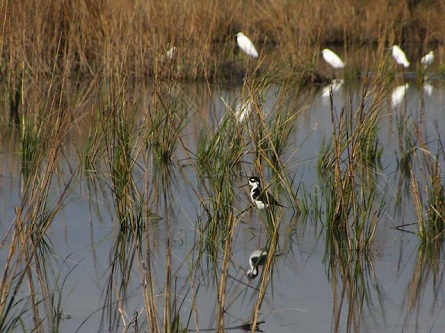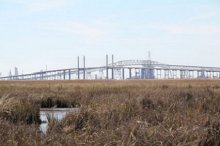Chevron Refinery, Port Arthur
Hazardous Waste Site | Jefferson County, TX | 1902 to 2013
What Happened?
The former Gulf Oil refinery began operations during the Spindletop salt dome oil boom in 1902. The refinery produced jet fuel, gasoline, petrochemicals, and other oil and chemical products. It historically released PAHspolycyclic aromatic hydrocarbons; a group of organic contaminants that are often the byproducts of petroleum processing or combustion. Many are toxic to aquatic life and several are suspected of causing cancer in humans. and heavy metals at the site.
Chevron acquired the property in 1984, and conducted cleanup activities beginning in 1999. The cleanup was completed in 2009.
What Were the Impacts?
Pollutants released from the refinery accumulated in surface waters, groundwater, sediments, and soils in surrounding areas. More than 350 acres of wetland, stream-bottom, and grassland habitats were injured, negatively impacting local wildlife.
What’s Happening Now?
In 2004, NOAA and other trusteesGovernment officials acting on behalf of the public when there is injury to, destruction of, loss of, or threat to natural resources. reached a settlement with Chevron for $4.4 million to fund habitat restoration. Implementation was completed in 2009 on these projects:
- Creation of 83 acres of tidal wetland
- Creation of 30 acres of coastal wet prairie habitat
- Installation of water control structures to improve 1,332 acres of coastal wetlands in the Sabine/Neches River basin
Following a monitoring period, the trustees certified all restoration as successful in 2013. Please note: this case is no longer active and restoration is complete.
“These projects will improve the fish and shellfish abundance in this part of southeast Texas, provide habitat for wildlife and fish, increase recreational opportunities for bird watching and fishing, and improve the habitat for waterfowl.”
Jessica White
NOAA Gulf of Mexico Disaster Response Center
Contacts
Jessica White
NOAA Disaster Response Center
Mobile, AL
(251) 544-5009
jessica.white@noaa.gov









